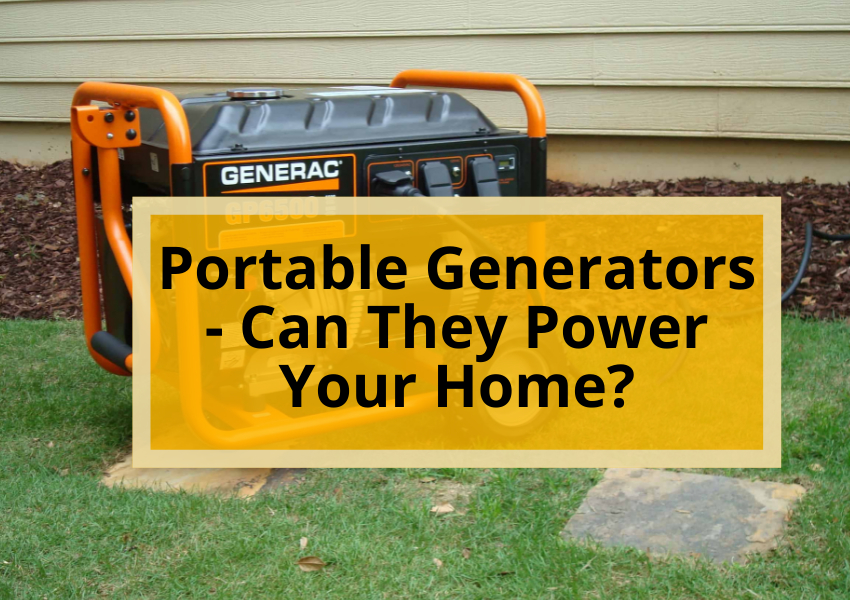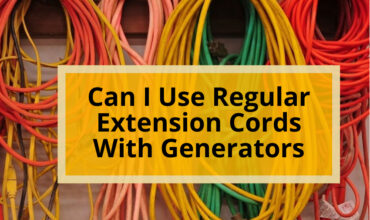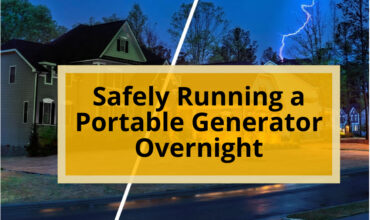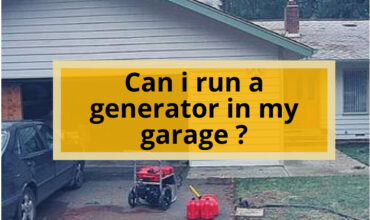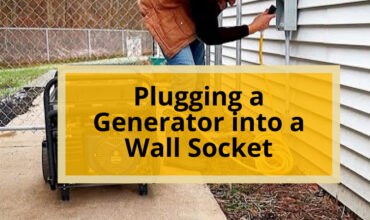With the threat of power outages always looming, more and more homeowners are considering portable generators as a backup power source. But how feasible is it to use a portable generator to power your entire house? Let’s take a look.
A portable generator can power your house, but there are a few things you need to keep in mind.
- Size
Portable generators come in a variety of sizes, so you need to choose one that is powerful enough to power your essential appliances. To do this, you need to calculate the total wattage of all the appliances you want to power. You can find the wattage of each appliance on its nameplate or in its owner’s manual.
- Type of fuel
Portable generators can be powered by gasoline, propane, or diesel. Gasoline generators are the most common type, but they can be noisy and produce carbon monoxide fumes. Propane generators are quieter and produce fewer emissions, but propane can be more expensive than gasoline. Diesel generators are the most expensive, but they are also the most powerful and efficient.
- Transfer switch
To safely connect a portable generator to your home, you need to use a transfer switch. A transfer switch isolates your home from the utility grid and prevents backfeeding, which can be dangerous for utility workers.
- Carbon Monoxide Detector
When choosing a generator, look for one that has a built-in carbon monoxide detector. This will help to protect you and your family from carbon monoxide poisoning.
What Size Generator Do You Need?
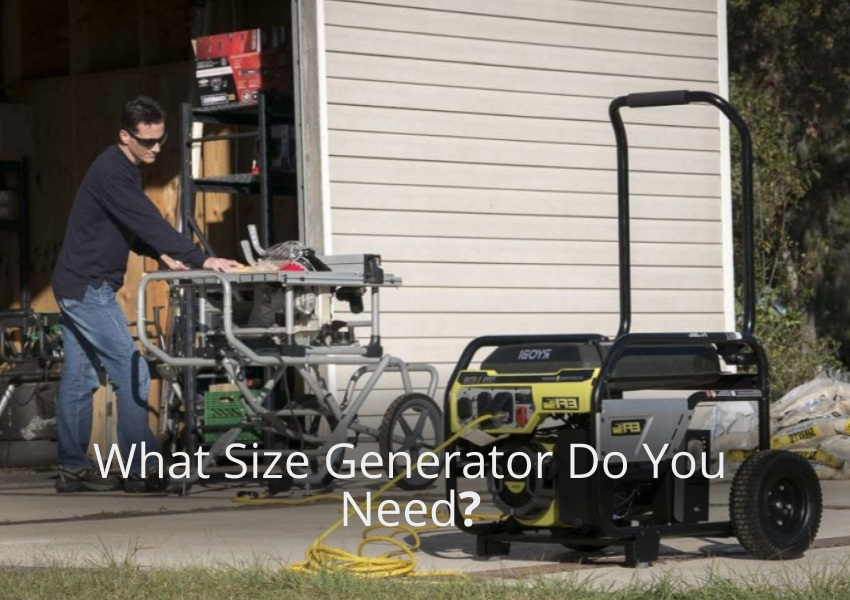
The first step is calculating what size generator you need to power your home’s essential circuits. As a rule of thumb, you’ll need a generator that provides at least double the wattage of the items you plan to run at the same time.
- To determine this, you’ll need to tally up the starting and running wattage requirements of appliances and devices you want to operate during an outage.
- Focus on critical items like your refrigerator, some lights, TV, computer, furnace/AC if needed, and any medical devices.
- The starting wattage is important since that’s the initial jolt of power an item needs to turn on – this is often 2-3 times higher than the running wattage.
- Once you know the total wattage needed, double it to find the recommended generator size. For example, if you want to run a refrigerator (700 starting watts), furnace fan (800 starting watts), TV (500 watts), phone chargers (100 watts), and some lights (600 watts) simultaneously, your total is 2700 watts. Doubling that means you’ll want at least a 5500-6000 watt generator or larger.
- Keep in mind, this is just for operating a few essentials – not your whole house. Powering all your home’s circuits would require an enormous and expensive generator far beyond what most households need.
Also read : What Happens If I Overload My Generator ?
How to Connect a Generator to Your Home?
- For powering individual household circuits, you’ll need to connect the generator to your home’s electrical panel. This involves running heavy-duty extension cords from the generator to the electrical panel.
- However, this can be extremely dangerous if not done properly. Mistakes could lead to backfeed, which sends electricity back into utility lines and poses an electrocution risk to utility workers.
- That’s why it’s critical to have a qualified electrician install a transfer switch, which seamlessly transfers power from the utility lines to your generator when needed. The transfer switch prevents backfeed and allows you to safely connect a generator to specific home circuits through your electrical panel.
- If installed correctly, you can plug the generator into the transfer switch to power selected circuits.
- Just make sure to start the generator and let it warm up for a few minutes before transferring power over. And remember to shut off and disconnect the generator before utility power is restored to avoid damage.
Safety tips for using a portable generator
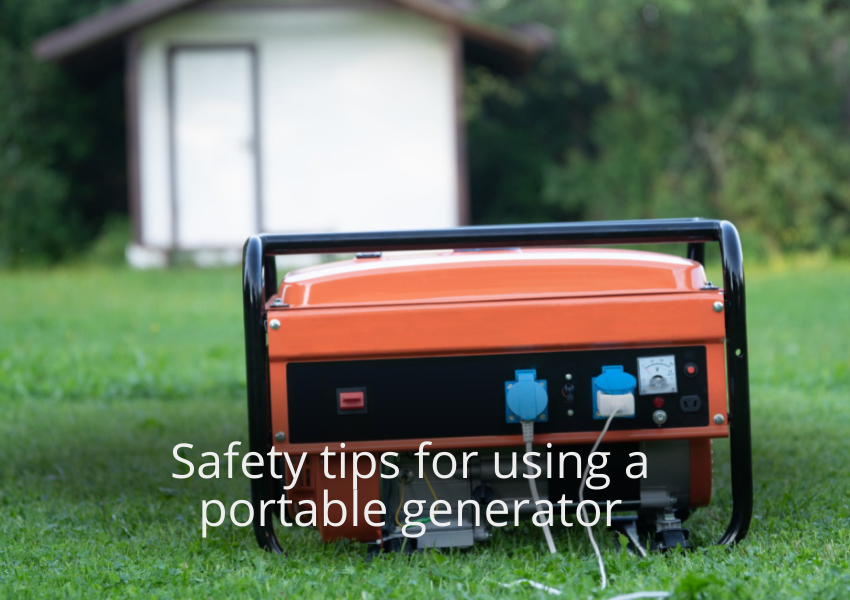
- Never operate a portable generator indoors.
- Place the generator at least 20 feet away from your house and other structures.
- Keep the generator area dry and well-ventilated.
- Never refuel a running generator.
- Turn off the generator and let it cool down before storing it.
How Much Can a Portable Generator Realistically Power?
Given their wattage capacities, portable generators are only able to power a few essential appliances and lights – not all of your home’s circuits. Even large 10,000–15,000 watt portable generators can only handle about 50% of household electrical loads.
Trying to draw too much power from a portable generator will cause circuit breakers to trip and potential damage to the generator. Expect to only be able to run your refrigerator, freezer, some lights, TV, phone/laptop chargers, and maybe a small window AC unit on a portable generator.
Running your central AC, electric stove, electric heat, hot water heater, washer/dryer, and other large appliances would require an enormous commercial-grade generator beyond what a household portable unit can handle.
Also read : Can I Backfeed My Generator?
Generator Run Time Considerations
One limitation of portable generators is their runtime. How long a portable generator runs comes down to its fuel source and tank size.
- Most standard portable generators hold just 5-10 gallons of gas, allowing for 5-10 hours of runtime at 50% load. Refueling adds more run time, but you’ll have to monitor the fuel level.
- Propane generators can go longer between refueling since a 20 lb propane tank lasts about 16 hours on a 5000 watt unit.
- Dual fuel generators offer the advantage of both gas and propane. For unlimited runtime, larger standby generators can connect to your home’s natural gas line or propane tank.
Just note that standby generators are permanently installed outdoors and can cost thousands.
Portable Generator Sizing Recommendations
- 3000-4500 watts: Powers fridge, some lights, TV, internet modem & router, phone/laptop chargers, and a few small appliances. Good for essentials during shorter outages.
- 5500-7500 watts: Powers fridge, freezer, more lights, small AC unit, TV, internet, phone chargers, and more small appliances. Can handle an extended outage of 1-2 days.
- 10,000-15,000 watts: Powers most household essentials including fridge, freezer, furnace fan, lights, TV, internet, small AC unit, and more. Best for extended outages of 2-5 days. Requires larger fuel tank for runtime.
Benefits of using a portable generator
- Portable generators are relatively affordable.
- They are easy to set up and use.
- They can be used to power essential appliances during a power outage.
- They are portable and can be used to power appliances in remote locations where there is no electricity.
Also read : Do I Need a Transfer Switch for My Generator?
Drawbacks of using a portable generator
- Portable generators can be noisy and produce carbon monoxide fumes, so they should only be used outdoors..
- They need to be refueled regularly, which can be inconvenient..
- They can be dangerous if not used properly. If the generator is not properly grounded or if it is overloaded, it can cause a fire or electrical shock.
FAQ
What maintenance does a portable generator require?
Check oil and coolant levels regularly. Change oil after first 20 hours of use and every 50 hours or annually after that. Inspect and clean air filters periodically.
What type of fuel should I use in my portable generator?
Portable generators can be powered by gasoline, propane, or diesel.
Gasoline generators are the most common type of portable generator. They are easy to find and relatively affordable. However, gasoline generators can be noisy and produce carbon monoxide fumes.
Propane generators are quieter and produce fewer emissions than gasoline generators. However, propane can be more expensive than gasoline.
Diesel generators are the most expensive type of portable generator, but they are also the most powerful and efficient.
What factors to consider when choosing the type of fuel to use in your portable generator?
Cost: Gasoline is typically the least expensive type of fuel, followed by propane and diesel.
Availability: Gasoline is the most widely available type of fuel, followed by propane and diesel.
Noise: Propane generators are the quietest type of generator, followed by diesel and gasoline generators.
Emissions: Propane generators produce the fewest emissions, followed by diesel and gasoline generators.
In Closing
Portable generators can provide backup power for some of your home’s essential needs during shorter outages. But realistically, they cannot power your whole house for an extended period. With proper setup and realistic expectations on capacity, portable generators can be a useful part of an emergency preparedness plan when outages strike. Just be sure to follow all safety guidelines and work with an electrician if connecting to household circuits.
